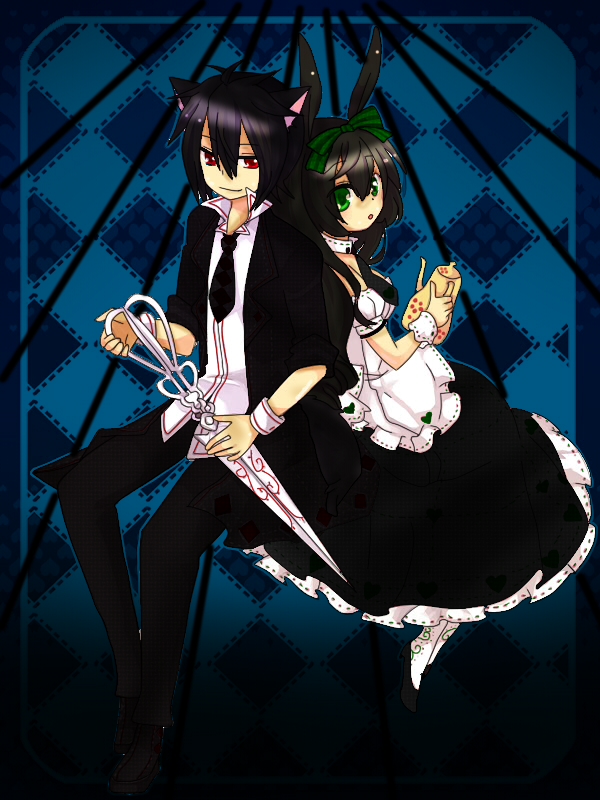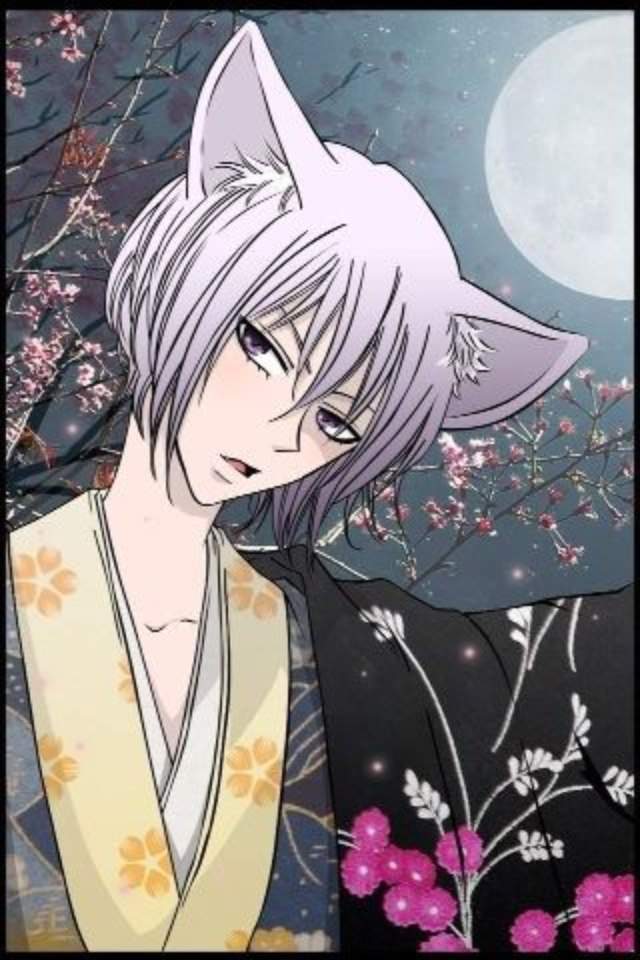
What is a half human half animal called?
What a half human half animal is called depends on the type of animal. A half human, half horse is a centaur. Q: What is a half human half animal called? Write your answer...
What is a half-human anime character?
List Rules Vote up the best half-human hybrid characters in anime. One of the most interesting tropes that pop up in anime are half-human anime characters. What that means exactly can vary from show to show, but here's the basic run-down: hybrid anime characters possess both human DNA and DNA from another species.
What is a half-human half-beast hybrid called?
Oddly enough, though, the closest we have for a general word containing the meaning of half-human, half-beast hybrid is "therianthrope," which generally refers to a shapeshifter, someone who is entirely human for part of the time and entirely animal for the other part.
What are some examples of half human/half dog hybrids?
Inuyasha is one of the most famous examples of a half-human, half-something else hybrid. Inuyasha was born to a human mother and a dog yokai father.

What are anime animal human called?
Moe anthropomorphism (Japanese: 萌え擬人化, Hepburn: moe gijinka) is a form of anthropomorphism in anime and manga where moe qualities are given to non-human beings (such as animals, plants, supernatural entities and fantastical creatures), objects, concepts, or phenomena.
What is a human with animal ears and tail called?
Kemonomimi (獣耳 or けものみみ, animal ears) are characters who have animal ears, commonly paired with an animal tail, from a variety of kemonomimi families.
What is a cat human hybrid called anime?
Kemonomimi (獣耳 animal ears) is an anime and manga term that describes humanoid characters that possess animal like features, mainly a pair of ears and a tail. The appearance of the ears and the tail is based on the family of each kemonomimi.
Is a human with animal parts a furry?
A morphic (or morph the Greek word for form, shape) is a furry character that has the body of a half-human, half-animal. Thus it is a character that is anthropomorphic, or partly human in appearance. For most, the term is contrastive with the term nonmorphic.
10 Claymores Are All Half-Youma
Claymores didn't have much say in their fate or their future, given the circumstances that made them what they are. In a medieval fantasy world in which demons called youma devour villagers and lay waste to human beings, Claymores are forced to fight and destroy the monsters.
9 Rin Okumura Is The Son of Satan (Blue Exorcist)
Few teens get along with their parents 100% of the time, and that's the case for Rin Okumura, too. Though he and his twin brother were raised by a kind priest, his real father wouldn't be fun to deal with at Thanksgiving. Rin's father is none other than Satan himself, though his mother was human.
8 Akihito Is Half-Youma (Beyond The Boundary)
Beyond the Boundary i sn't as popular as many other Kyoto Animation productions, and it's a real shame. The show has a stilted start but gradually becomes a fantastic series about acceptance and growth. None of its characters are as simple as they seem to be, high schoolers who work as Spirit Warriors too.
7 Zero Two Is Part Klaxosaur (Darling in the FRANXX)
The worldbuilding in Darling in the Franxx often feels a bit overcomplicated, but the essential pieces are clear enough. Zero Two is powerful but not entirely human, and life has sometimes been hard on her.
6 Eureka and Renton Have a Son (Eureka Seven: AO)
Midway through mecha classic Eureka Seven, Renton and the rest of the cast realize that Eureka really isn't what she appears to be. In a society that's constantly fighting back scub coral - organic, environmental monsters unlike anything on earth - the revelation that Eureka is a Coralian, a being created by the scub coral, is a real doozy.
5 Inuyasha's Yokai Heritage Is Key To His Character (Inuyasha)
Half-human, half-yokai, and all attitude: that's Inuyasha, more or less. Inuyasha's the product of Toga, a proud and renowned dog yokai, and a human woman named Izayoi. Set primarily in the past and in a parallel universe rife with mythology and magic, the world of Inuyasha is colorful but surprisingly sinister at times.
4 Fans Will Never Forget Nina Tucker's Final Fate (Fullmetal Alchemist)
It seems unkind to mention Nina and Alexander, but there's no denying that the pair become one of the most horrifying human-monster hybrids in anime history. Even today, few characters are as loathed as Nina's father, and for good reason.
What are some mythical creatures that are half human and half animal?
Here are some of the mythical half-human, half-animal creatures from stories told in past ages. Sandro Botticelli (Italian, 1444/45-1510). Pallas and the Centaur, ca. early 1480s.
What is the meaning of "half human half beast"?
Oddly enough, though, the closest we have for a general word containing the meaning of half-human, half-beast hybrid is "therianthrope," which generally refers to a shapeshifter, someone who is entirely human for part of the time and entirely animal for the other part. Other words that are used in English and other languages are specific to ...
What is the name of the creature with the head of a human and the body and haunches of a
Sphinx. The sphinx is a creature with the head of a human and the body and haunches of a lion and sometimes the wings of an eagle and tail of a snake. It is most commonly associated with ancient Egypt, due to the famous Sphinx monument that can be visited today at Giza.
What is the name of the mermaid half woman?
There's an Irish and Scottish version of a mermaid, half-seal, half-woman, known as a selkie . The Danish storyteller Hans Christian Anderson used the mermaid legend to tell of a hopeless romance between a mermaid and a human man.
What is the most famous hybrid creature?
One of the most famous hybrid creatures is the centaur, the horse-man of Greek legend. An interesting theory about the origin of the centaur is that they were created when people of the Minoan culture, who were unfamiliar with horses, first met tribes of horse-riders and were so impressed with the skill that they created stories of horse-humans.
What is the harpy in Greek mythology?
Harpy. In Greek and Roman stories, the harpy was described as a bird with the head of a woman. The earliest existing reference comes from Hesiod, and the poet Ovid described them as human vultures. In legend, they are known as the source of destructive winds.
Where did the mermaid come from?
The first legend of the Mermaid, a creature with the head and upper body of a human woman and the lower body and tail of a fish comes from a legend from ancient Assyria, in which the goddess Atargatis transformed herself into a mermaid out of shame for accidentally killing her human lover.
What animal has a head of a human?
Kamadhenu – A bovine creature with the head of a human, the body of a cow, the wings of a pigeon, and the tail of a peacock. Meduza – A sea creature from Russian folklore with the head of a maiden and the body of a striped beast, having a dragon tail with a snake's mouth and elephant legs with the same snake mouths.
What is the name of the creature with a bird's head?
Gamayun – A Russian creature portrayed with the head of a woman and the body of a bird. Inmyeonjo – A human face with bird body creature in ancient Korean mythology. Harpy – A half-bird, half-woman creature of Greek mythology, portrayed sometimes as a woman with bird wings and legs.
What is the name of the tiger in Hindu mythology?
Karasu-tengu – A crow -type Tengu. Karura – A divine creature of Japanese Hindu-Buddhist mythology with the head of a bird and the torso of a human. Keibu Keioiba - A tiger headed human, who was a priest voluntarily transformed his body, in Manipuri folklore. Khepri – The dung beetle -headed Egyptian God.
What is the name of the god with the hindquarters of a lion?
Bes – An Egyptian god with the hindquarters of a lion. Keibu Keioiba - A tiger-headed human in Manipuri folklore. Kurma – Upper-half human, lower half tortoise. Kusarikku – A demon with the head, arms, and torso of a human and the ears, horns, and hindquarters of a bull.
What is the name of the creature with the head of a woman and the body of a bird?
Alkonost – A creature from Russian folklore with the head of a woman with the body of a bird, said to make beautiful sounds that make anyone who hears them forget all that they know and not want anything more ever again.
What is the goddess with a bird head?
Bird goddess – Vinca figures of a woman with a bird head. Capelobo - A creature from Brazilian folklore with the head of an anteater, the torso of a human, and the legs of a goat. Cernunnos – An ancient Gaulish / Celtic God with a head of a deer.
What is the name of the Egyptian god with a frog head?
Heqet – The frog -headed Egyptian God. Horse-Face – A horse -headed guardian or type of guardian of the Underworld in Chinese mythology. Horus, Monthu, Ra, and Seker – Each of these Egyptian Gods has the head of a falcon or hawk. Karasu-tengu – A crow -type Tengu.

Popular Posts:
- 1. what is anime cosplay
- 2. what does harem mean in anime
- 3. a anime boy with red hair blushing
- 4. a silent voice anime planet
- 5. did miyazaki says anime is trash
- 6. a silent voice anime domain_10
- 7. can you watch anime on the switch
- 8. can anime strike be pay for with giftcards
- 9. don t bully anime
- 10. who is the hottest anime